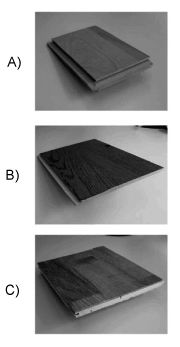
COMMISSION REGULATION (EC) No 1199/2005of 22 July 2005 concerning the classification of certain goods in the Combined Nomenclature- "Official Journal of the European Union", No L 195/3 of 27.7.2005 - |
THE COMMISSION OF THE EUROPEAN COMMUNITIES,
Having regard to the Treaty establishing the European Community,
Having regard to Council Regulation (EEC) No 2658/87 of 23 July 1987 on the tariff and statistical nomenclature and on the Common Customs Tariff(1), and in particular Article 9(1)(a) thereof,
______________
(1) OJ L 256, 7.9.1987, p. 1. Regulation as last amended by Council Regulation (EC) No 493/2005 (OJ L 82, 31.3.2005, p. 1).
Whereas:
(1) In order to ensure uniform application of the Combined Nomenclature annexed to Regulation (EEC) No 2658/87, it is necessary to adopt measures concerning the classification of the goods referred to in the Annex to this Regulation.
(2) Regulation (EEC) No 2658/87 has laid down the general rules for the interpretation of the Combined Nomenclature. Those rules apply also to any other nomenclature which is wholly or partly based on it or which adds any additional subdivision to it and which is established by specific Community provisions, with a view to the application of tariff and other measures relating to trade in goods.
(3) Pursuant to those general rules, the goods described in column 1 of the table set out in the Annex to this Regulation should be classified under the CN codes indicated in column 2, by virtue of the reasons set out in column 3 of that table.
(4) It is appropriate to provide that binding tariff information which has been issued by the customs authorities of Member States in respect of the classification of goods in the Combined Nomenclature but which is not in accordance with this Regulation can, for a period of three months, continue to be invoked by the holder, under Article 12(6) of Council Regulation (EEC) No 2913/92 of 12 October 1992 establishing the Community Customs Code(2).
(5) The measures provided for in this Regulation are in accordance with the opinion of the Customs Code Committee,
______________
(2) OJ L 302, 19.10.1992, p. 1. Regulation as last amended by Regulation (EC) No 648/2005 of the European Parliament and of the Council (OJ L 117, 4.5.2005, p. 13).
HAS ADOPTED THIS REGULATION:
Article 1
The goods described in column 1 of the table set out in the Annex shall be classified within the Combined Nomenclature under the CN codes indicated in column 2 of that table.
Article 2
Binding tariff information issued by the customs authorities of Member States, which is not in accordance with this Regulation, can continue to be invoked for a period of three months under Article 12(6) of Regulation (EEC) No 2913/92.
Article 3
This Regulation shall enter into force on the twentieth day following its publication in the Official Journal of the European Union.
This Regulation shall be binding in its entirety and directly applicable in all Member States.
Done at Brussels, 22 July 2005.
For the Commission
László KOVÁCS
Member of the Commission
ANNEX
Description of the goods |
Classification |
Reasons |
(1) |
(2) |
(3) |
1. A flooring panel composed as follows: |
4411 19 90 |
Classification is determined by General Rules 1, 3 (b) and 6 for the interpretation of the Combined Nomenclature and the wording of CN codes 4411, 4411 19 and 4411 19 90. |
2. A flooring panel composed of three layers of wood (total thickness of 7 mm). |
4412 29 80 |
Classification is determined by General Rules 1 and 6 for the interpretation of the Combined Nomenclature and the wording of CN codes 4412, 4412 29 and 4412 29 80. |
3. A flooring panel composed of three layers of solid wood (total thickness of 14 mm). |
4418 30 91 |
Classification is determined by General Rules 1 and 6 for the interpretation of the Combined Nomenclature and the wording of CN codes 4418, 4418 30 and 4418 30 91. |
(*) The photographs are purely for information.
